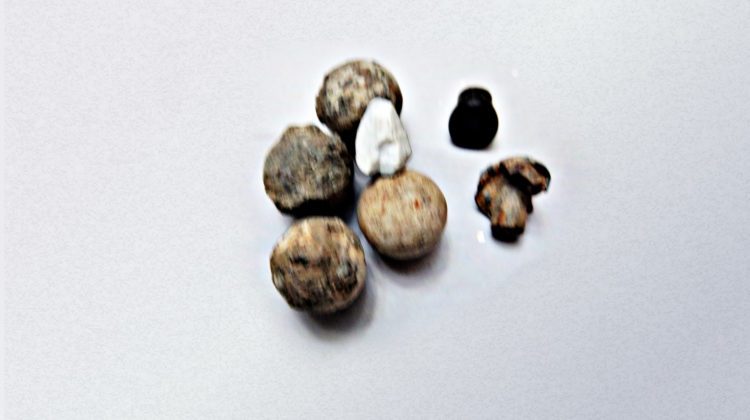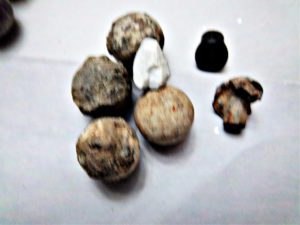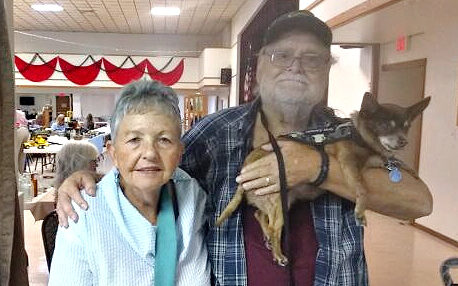
I’m 100% Certain! Somewhat….
Which facts, stories, or statistics do you know with absolute certainty about the Civil War? You may not remember it “off the top of your head” but you can certainly get the solid facts online, right? Yes. And no. For example, President Lincoln used electrical signaling with unparallel success throughout the War. Right? Yes, he did!
A Fiery Gospel Writ in Burnished Rows of Steel
For just one example of how difficult facts are to come by from the War, consider casualties of the War. Most people think that at least these numbers are hard and fast. But no they are not.
Casualties include non-combat deaths as well as the number who died in battle. The principle cause of death during the War was disease, not combat, but soldiers also died from accidents, drowning, heat stroke, suicide, murder, and execution[1]. It is surprising to us just how many soldiers died from non-battle deaths as compared to those who died in combat.
HistoryNet, which reports in rounded numbers, claims that there were 110,000 Union combat dead while a quarter million more died from other causes. The Confederacy lost some 95,000 in battle and skirmish and over 165,000 to disease and other causes. But the exact number who died during the War is not known. It never will be.
Big Stuff, Little Stuff
Ok. While we don’t have unbreakable facts for all the big stuff like total number of causalities, we are on top of the small stuff like arms and ammunition, right?
Well, neither the South nor North ever had a “…central laboratory or arsenal for fabricating small arms ammunition. … Even with strict regulations and guidelines, the Federal …and the smaller Confederate arsenals and depots …often made different cartridges and bullets for the same arms. …the bullet and cartridge requirements were supplemented by purchases from private manufacturers and abroad.”[2] And soldiers often brought arms from home which required a constant source of ammunition.
“Bullets made during the Civil War were made of lead and weighed between 1 and 1.5 ounces. Since there were no written rules or standards for making a bullet, it is difficult to say just how many different varieties of bullets were made and used. … A factory worker, using a machine, could make as many as 3,000 bullets an hour.”[1]
Birth of An Enigma and A Conundrum
Ok, some things can never be known with certainty about the American Civil War. But have you ever been minding your marble-collecting business and all of a sudden and without provocation you discover a puzzle without any clues? One of those “most peculiar, Mama” moments?[1]
We have struggled with such a puzzle for over a decade now. The idea seems simple enough. We wondered what evidence exists that soldiers played marbles during the War? And were marbles ever put to any other uses by either Army? Certainly, the question sounds straightforward. But evidence? Solid proof? Our research lead to the Chapter “Louse Races and Ring Taw: Marbles in the Civil War” in The Secret Life of Marbles: Their History and Mystery. We answered some of our questions there, but we still had fragments of information left over. Were marbles ever used in other ways during the War?
Small Balls of Fire
In 2009 Larry’s sister, Lynn G. Howell, sent us some Civil War munitions which her son and Larry’s nephew, Mitchell Dunn, had purchased at Winter Star Fine Collector Guns Antiques and Collectibles in Burnsville, Yancey County, North Carolina. Neither we nor Lynn consider ourselves munitions collectors. On the other hand we have found quite a few over the years and all of us have a few that we study and learn from.
The Civil War balls which Lynn sent us are about ⅞” but each weighs only about 10 grams (about 154.3 grains). Considering the lack of uniformity in Civil War manufacturing, we know that there is no “typical” size for such musket balls. On the other hand, a 69 caliber ball weighs as much as 770 grains.
So, the balls which Lynn sent are much too light and much too large to be a rifle bullet. This led us to realize that each shot was jacketed or clad in lead, but none are solid lead. So next we did some exhaustive research on cladding in the Civil War.
Cladding Marbles for Munitions
Our research confirmed that small-arms munitions were sometimes clad in lead during the War.[2] And stone balls were also clad in lead.

This photograph shows four lead clad stone shot which we have in our collection. Note that their size is not uniform; some shot are hardly spherical while some shot appear rough on the surface. Others have little cladding left.
Since stone shot were well-known and used, and since they did clad or jacket small-arms shot, it was a short mental leap to the idea that our 2009 shot, which look like large minié balls, were clad. And our first thought was that they may be clad stone. However, when we examined a shard from a ball with a 10X loop (check the piece in the photograph) we realized that we were positively not looking at stone. In fact, through the loop the inside of the shot looked like silica!

Silicon dioxide
Porcelain! Marbles! What else could it be? Silica is glass and this glass has been known for its hardness since antiquity. Silica is the most abundant mineral in the earth’s crust. Was it possible that silica, glass, or ceramic (silica is a principle ingredient in all ceramic and glassware) jacketed in lead was used in battle?
We spent days researching but could find absolutely nothing on the cladding of glass during the War. Also, we spoke to a Civil War re-enactor in Kissimmee, Florida, who is also a teacher and Civil War collector, and he had never heard of such a thing. We spoke to a member of the staff at a National Park, and he had never heard of using glass in munitions, either.
Not Completely Goofy; Someone else has an oligoconical miniè ball!
Finally on the Internet we saw an advertisement for a Civil War auction and read about one item, which had already been sold. Because it was sold, there was neither photograph or price listed, but there was this note from the seller:
“I was told by the person I obtained this from that this is an original Civil War .80 Caliber Lead Coated Porcelain round musket ball, bullet, or oligoconical miniè ball. It is very light. I was told it was dug up or field found in Tennessee long ago and would be of Confederate origin. As lead became scarce late in the war, Porcelain round shot covered with a thin layer of lead came into use. I have been unable to find any reference of such use. … This actually is probably an artillery canister-shot or Grape Shot.”
Not Grape: Canister!
Our next project was to find out all we could about Civil War canister. In our minds we had already ruled out the idea that the shot are grape or some other type cluster because some have ferris oxide or iron transfer or stain. We learned about the 3” Federal Hotchkiss Canister.
This is made of tinned sheet iron, filled with tiers of large lead balls packed in sawdust. The powder charge first went into the cannon as a bag and then the cannister was put into the tube. Therefore, these contain no explosive charge. They simply blow apart when leaving the cannon, acting like a horrific giant shotgun.”
Shotgun Bucket from Hell!
Can you even imagine the terror of being in front of such a ‘shotgun’ firing glass clad in lead? The shell casing was in effect a bucket which exploded when fired. While we thought the tin of the canister may have rusted, the canister may have been made of a tin/iron alloy. Over the last 150 years the tin/iron alloy canister rusted away from the dropped bucket leaving only the “load”: our shot. And the number of shot we have between us is just about right for one canister load. In effect, our shotgun shell was a tin bucket filled with sawdust and glass marbles clad in lead! Lynn drew this sketch for us.

While no one could really aim this thing, it was most effective at close range. Say, between one hundred and four hundred yards. [1]
Considering the laws of physics, is such a canister even possible?
Would it Fire?
Check out these excerpts from TreasureNet [you’ll need to register]:
I have trouble believing that tumbler media would be coated in lead, and if these things were marbles, why would anyone have covered the beautiful white porcelain with lead? …. Porcelain has a high compressive strength (it’s harder than granite). That’s why it can be used for dental crowns and hip replacements. At a compressive strength of 25,000 psi, why couldn’t porcelain have withstood the force of being fired from a civil war cannon? (By the way, the southeastern United States is rich in kaolinite, the primary ingredient, along with feldspar or quartz, in porcelain.)…
The kinetic energy of a projectile is relative to both its mass and its acceleration. Unless you know the muzzle velocity of the projectile, its specific mass, and the energy needed to penetrate a specific target, it’s not possible to judge how effective it would be as a projectile. If lead-coated porcelain grapeshot were accelerated to a high enough velocity it could certainly do horrific damage to a human target….
I see no reason why these objects could not have served as grapeshot. Whether they actually did or not is, of course, another story.”
Why Clad China Marbles with Lead?
We do have one answer to the question of “Why clad China marbles with lead?” Late in the War the South was desperately low on all munitions and material. The armories used everything that they could adapt to war. What good would fancy marbles be should the Confederacy lose the War?
Online we found a picture of an antipersonnel canister like the one in Lynn’s sketch. It even has a wire handle on it! It looks like a lard or syrup bucket, and that may be what it was. The bucket was filled with sawdust, turpentine, and glass shot thinly clad in lead!
This bucket looks nothing like the regular Federal canisters we have studied in the references, and we are sure that it was probably of Confederate manufacture and use.

Check this photograph again. To the right are spent bullets. We cannot tell much about them although we do have enough field experience to note that the bullets hit targets. From field work, we can also judge from the compacted nature and striations on these high-velocity rounds that they struck tissue and bone. And we have been sure all along that our marble canister was dropped in the field. It was never fired. But that group of artillerymen were not clumsy. It is very difficult to focus your attention while “hot lead” is pouring in!
It must have been Hell on earth that day as the Confederates desperately tried to fire the canister while the Federals rained an unmerciful hail of rifle fire down on them.
How were the Marbles Clad?
We feel we have answered the fundamental question “What are these?” They are marbles clad in lead and they were used by the Confederacy late in the Civil War. However, we still have unanswered questions.
First, exactly how were the “marbles” clad? Based on the external appearance of the lead, we feel confident that the balls were made in a cold mold press. We believe this because:
- One ball has lumps of lead on the surface which were not cleaned when taken out of a press.
- At least one ball has a raised ring around the hemisphere indicative of the space between the top and bottom of the mold.
- One or two of the balls have flat surfaces on the poles. This could have been caused when the top of the mold was pressed down onto the ball.
Still, we have no idea how they got the silica balls into the molten lead in the bottom mold cup. One individual suggested they poured lead over the silica ball, but that idea does not conform to what we see on the lead. We also have no idea where the shot were made. Most munitions for the Confederacy were made in Richmond. However, if these shot did come from late in the War, which we believe is true, then where were they made?
Where Were These Munitions Made?
Vicksburg fell in July 1863 closing the Mississippi lifeline to the South. And while Richmond did not fall, it is almost certain that there would have been no way to ship heavy ordinance from Virginia by late in the War. Further, most small “powder mills” had already been targeted and burned by the Union as the War drew to a close.
It probably would not help to know where the shot were found, but it might. While bought from a reputable dealer in North Carolina, we have no way to know where they were dropped or when.
So, mysteries remain. We have probably the rarest ammunition ever found from the War. Together with Lynn we have much of the contents of an entire canister of “dropped” shot which was never fired. One source notes that one canister held 40 – 50 shot.[1] And there may be no one in America who can answer, with 100% certainty, the rest of our questions.
For Further Reading on Marbles as Munitions
Georgia Backroads, Summer 2012, page 29 in Ray Chandler’s “Masters of The Field — Wright’s Georgia Brigade at Gettysburg.”
Treasure Net While you have to register to search the site, this is a quick process and well worth the effort. Search for “confederate clay shot solved shooter marble”.
Joshua’s Attic: Ordinance Area for more on the Hotchkiss Canister
US Civil War Advancements in Ordinance at aeragon.com
A Handbook of Civil War Bullets & Cartridges by James E. and Dean S. Thomas
With apologies to John Lennon’s Nobody Told Me.
Want to read other Marble Stories?

